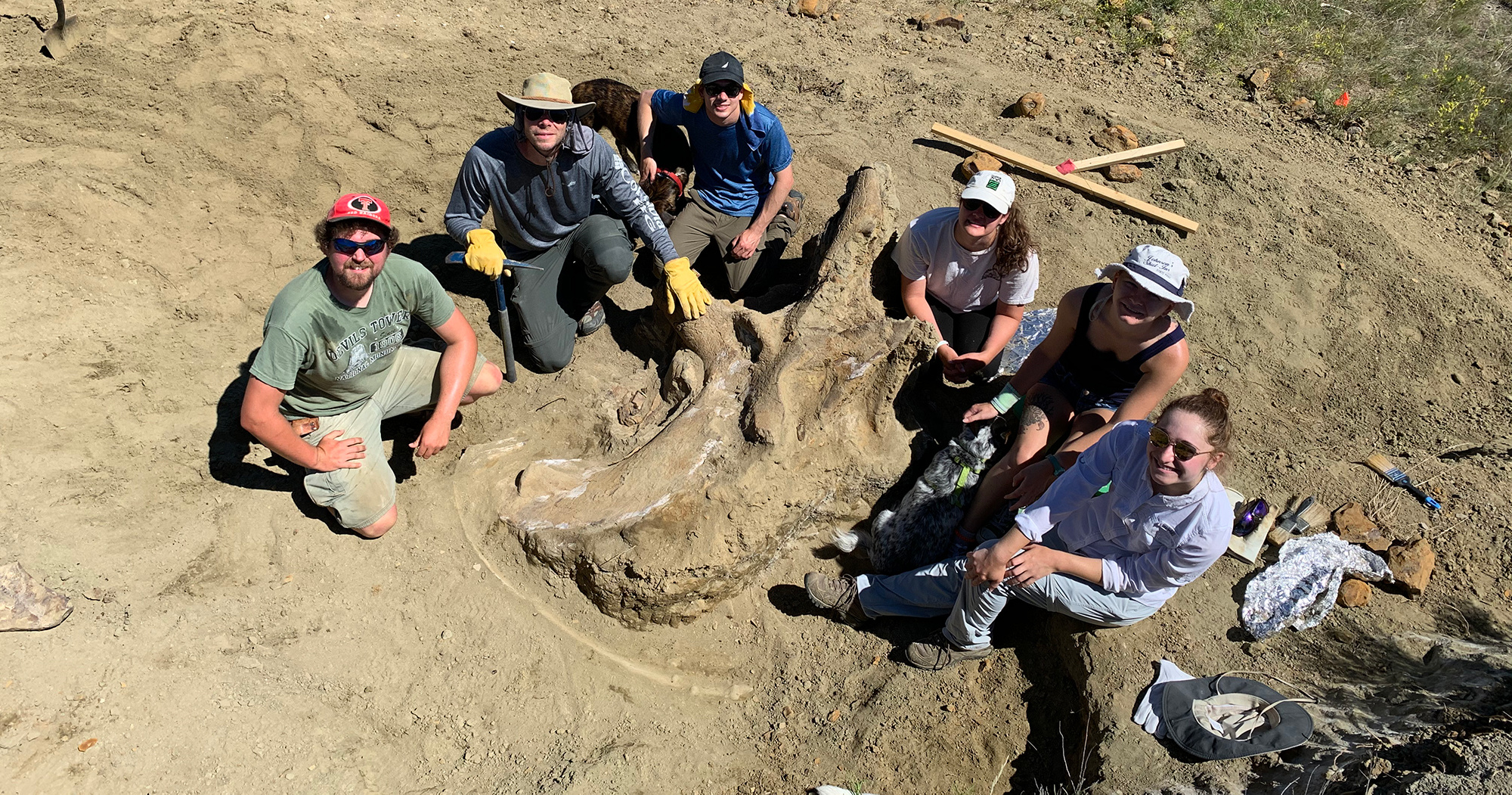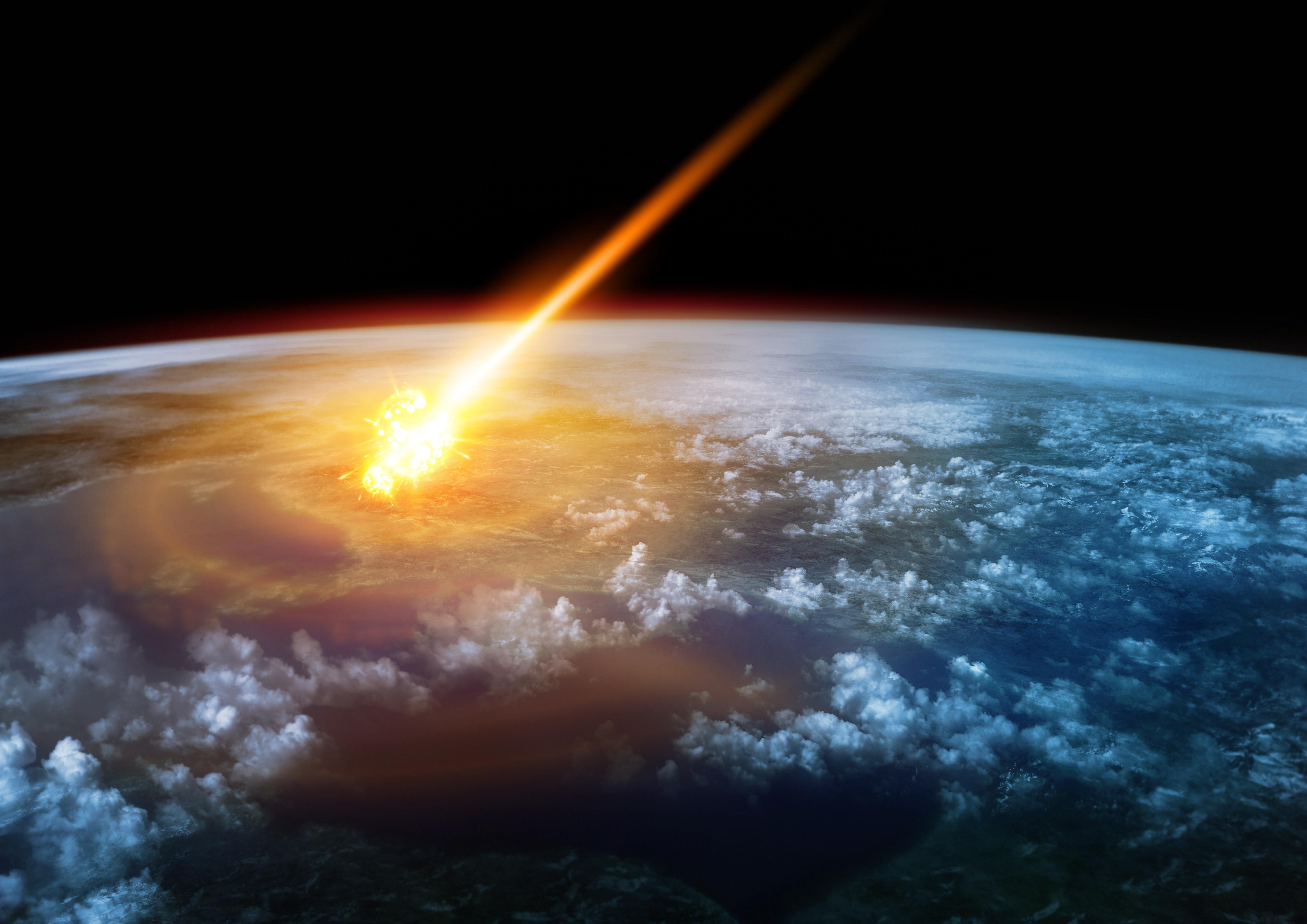How dinosaurs evolved into birds
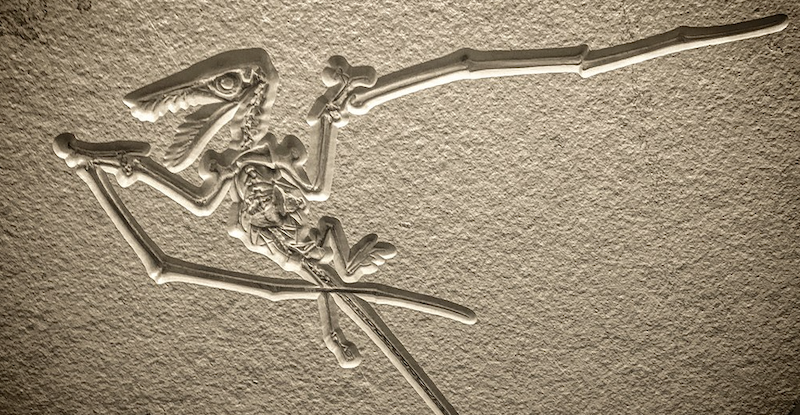
- In his new book, "A Very Short History of Life on Earth," author and editor Henry Gee tells the story of how simple, ancient lifeforms paved the way for all of the creatures that exist today.
- This excerpt of Gee's book explores how dinosaurs evolved the necessary structures and abilities for flight.
- All birds can be traced back to a group of dinosaurs called theropods.
The following is an excerpt from A VERY SHORT HISTORY OF LIFE ON EARTH. Used with the permission of publisher, St. Martin’s Press. Copyright © Henry Gee 2021.
Dinosaurs had always been built to fly. It started with their commitment to bipedalism, which had always been rather greater than that of their many crocodile-like relations.
Most habitually four-footed creatures have a center of mass in the chest region. It takes a lot of energy for them to lever themselves upward on their hind limbs. This makes it hard for them to stand comfortably upright for any length of time. In dinosaurs, by contrast, the center of mass was over the hips. A relatively short body forward of the hips was counterbalanced by a long, stiff tail behind. With the hips as a fulcrum, dinosaurs could stand on their hind limbs without effort. Rather than the stumpy, robust limbs of most amniotes, dinosaurs could grow their hind limbs long and thin. Legs are easier to move if they are more slender toward the ends. The easier the legs are to move, the easier it is to run fast. The forelimbs, no longer required for running, were reduced, the hands left free for other activities, such as grasping prey items or climbing.
Constructed as a long lever, balanced on long legs, dinosaurs had a system of coordination that monitored their posture constantly. Their brains and nervous systems were as pin sharp as any animal that ever existed. All this meant that dinosaurs could not only stand but also run, strut, pivot, and pirouette with a poise and grace the like of which the Earth had not seen before. It was to prove a winning formula.
The dinosaurs swept all before them. By the end of the Triassic, they had diversified to fill every ecological niche on land, much as the therapsids had in the Permian—but with consummate elegance. Dinosaurian carnivores of all sizes preyed on dinosaurian herbivores, whose defense was either to grow to great size or clothe themselves in armor so thick they resembled tanks. In the sauropods, dinosaurs reverted to being quadrupeds and became the largest land animals ever to have lived, some measuring more than fifty meters long and, in Argentinosaurus, weighing more than seventy tons.
And yet even they did not escape predation entirely. They were preyed on by gigantic carnivores: land sharks such as Carcharodontosaurus and Giganotosaurus, culminating—in the very last days of the dinosaurs—in Tyrannosaurus rex.
In this single creature the potential of the dinosaurs’ unique construction was taken to its greatest extreme. The hind limbs of this five-ton monster were twin columns of sinew and muscle in which the speed and grace of its ancestors were traded for prodigious power and almost unstoppable force. Balanced on its mighty hips by a long tail, the body was relatively short, the forelimbs reduced to mere vestiges, the mass concentrated in the powerful neck muscles and deep jaws. The jaws were full of teeth, each one the size, shape, and consistency of a banana, if bananas were harder than steel. These were capable of bone-crushing force, piercing the armor of slow but otherwise well-defended bus-sized herbivores such as ankylosaurs and the many-horned Triceratops. Tyrannosaurus and its relatives tore bloody chunks from their prey and swallowed them whole—meat, bone, armor, and all.
But dinosaurs also excelled at being small. Some were so small they could have danced in the palm of your hand. Microraptor, for example, was the size of a crow and weighed no more than a kilogram; the peculiar, bat-like Yi, diminutive in name as well as size, weighed less than half that.
The range of size in therapsids had been from large elephant down to small terrier, but dinosaurs exceeded even these extremes. How did dinosaurs get to be so very large—and so very small?
It began with the way they breathed.
There had been a rupture, deep in amniote history. In the mammals—the last surviving therapsids, Triassic throwbacks still gamely hanging on in the dinosaurs’ shadow— ventilation was a matter of breathing in and breathing out again. Considered objectively, this is an inefficient way to get oxygen into the body and carbon dioxide out. Energy is wasted drawing fresh air in through the mouth and nose and down into the lungs, where oxygen is absorbed into the blood vessels surrounding the lungs. But the same blood vessels must shed waste carbon dioxide into the same spaces, which must be exhaled through the same holes by which fresh air came in. This means that it is very hard to clear all the stale air at once or to fill every corner and crevice with fresh air in a single inspiration.
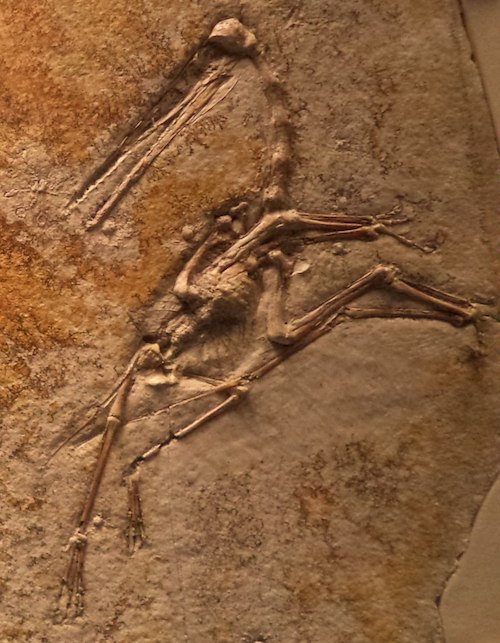
The other amniotes—dinosaurs, lizards, and others—also breathed in and out through the same holes, but what happened between inspiration and expiration was rather different. They evolved a one-way system for air handling, which made breathing very efficient. Air entered the lungs but did not immediately come out again. Instead, the air was shunted, guided by one-way valves through an extensive system of air sacs throughout the body. Although seen in some lizards to this day, it was the dinosaurs that elaborated this system to its highest degree. Air spaces—ultimately, extensions of the lungs—surrounded the internal organs and even penetrated the bones. Dinosaurs were full of air.
This system of air handling was as elegant as it was necessary. With powerful nervous systems and active lives that demanded the acquisition and expenditure of large amounts of energy, dinosaurs ran hot. Such energetic activity required the most efficient transport of air to oxygen-hungry tissues that might be contrived. This turnover of energy created a great deal of excess heat. Air sacs are a good way to shed it. And this was the secret of the enormous size some dinosaurs achieved: they were air-cooled.
If a body grows but retains its shape, its volume will grow much faster than its surface area. This means that as a body gets larger, there is much more of it on the inside relative to the outside. This can become a problem for acquiring the food, water, and oxygen that a body requires—as well as voiding waste products and the heat generated by digesting food and simply living. This is because the area available for getting things in and out shrinks relative to the volume of tissues that must be so served.
Most creatures are microscopic, so none of this is a problem, but for anything much bigger than a punctuation mark, it becomes an issue. This is resolved, first, by evolving specialized systems of transport, such as blood vessels, lungs, and so on and, second, by changing shape, creating extended or convoluted systems that act as radiators, from the sails of pelycosaurs and the ears of elephants to the inner complexities of the lungs, which serve the important function of dissipating excess heat in addition to gas exchange.
The mammals, when they were eventually liberated from a world dominated by dinosaurs and able to grow to anything larger than a badger, solved this insulation problem by shedding hair as they grew and by sweating. Sweat secretes water onto the skin surface, and as this evaporates, the energy required to transform liquid sweat into vapor is shed by tiny blood vessels just under the skin, creating a cooling effect. But exhaled air from the lungs also accounts for heat loss—which is why some of the furrier mammals pant, exposing a long, wet tongue to the evaporative relief of the air. The very largest land mammal was Paraceratherium, a tall, spindly, and hornless relative of the rhinoceroses, which lived around 30 million years ago, long after the dinosaurs had vanished. It grew to around four meters at the shoulder and weighed up to twenty tons.
But the largest dinosaurs were much, much larger than this. The surface area of a gigantic sauropod such as the seventy-ton, thirty-meter-long Argentinosaurus, among the very largest land animals ever to have existed, was minute compared with its volume. Even changes in shape, such as extending the neck and tail, were not enough to shed all the heat generated by its capacious insides.
Although sauropods were very large, it’s a rule of thumb that large animals have more relaxed metabolic rates than smaller ones, so they generally run a bit cooler. Warming a dinosaur that size in the sun would have taken a long, long time—but cooling it would have taken just as long, so a very large dinosaur, once warmed, could have maintained a fairly constant body temperature simply by being very large.
It was, however, the heritage of the dinosaurs that saved them—and allowed them to grow so big. Because their lungs, already voluminous, were extended into a system of air sacs that ramified throughout the body, these animals were less massive than they looked. Air sacs in the bones also kept the skeleton light. The skeletons of the largest dinosaurs were triumphs of biological engineering, the bones reduced to a series of hollow, weight-bearing struts, with as few non-weight-bearing parts as possible.
But the key was the fact that the internal system of air sacs did more than conduct heat from the lungs. It took heat from the internal organs directly, without first having to transport it around the body via the blood, then to the lungs, and then dissipating some of it on the way, compounding the problem. A sizable beneficiary was the liver, which generated a lot of heat and, in a large dinosaur, was the size of a car. The air-cooled internal workings of dinosaurs were more efficient than the liquid-cooled mammalian version. This allowed dinosaurs to become much larger than mammals ever could, without boiling themselves alive.
Argentinosaurus was less a cumbrous behemoth than a light-footed, quadrupedal, flightless…bird. For it is the birds, the inheritors of dinosaurs, that have the same lightweight structure, the same fast-running metabolism, and the same system of air cooling. All of which are enormously advantageous for flight, an activity that demands a light airframe.
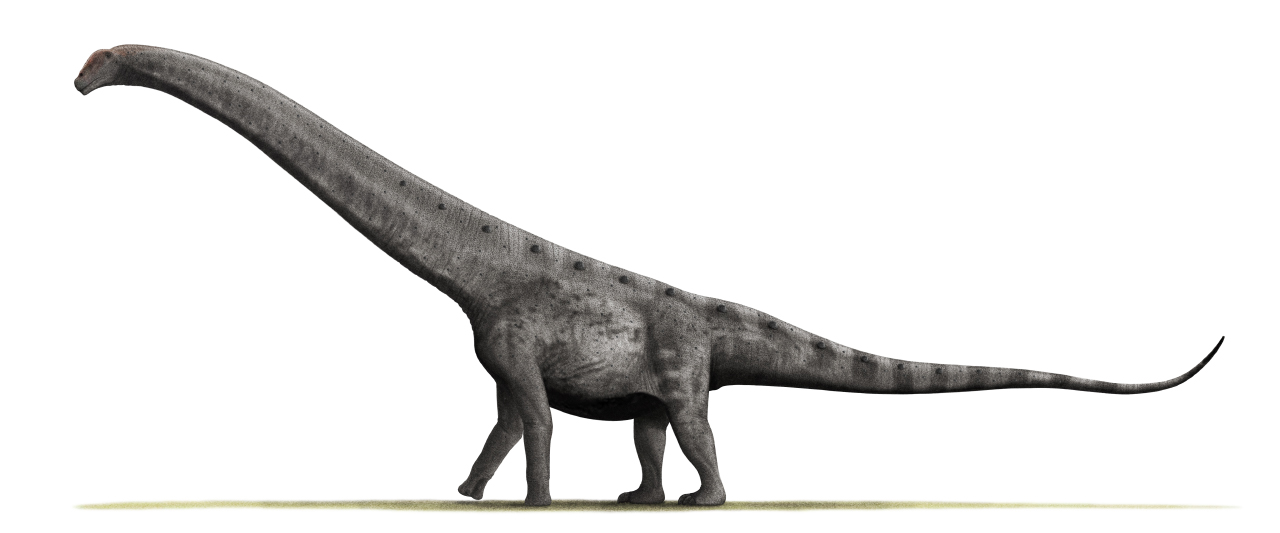
Flight is also associated with feathers. A coat of plumage was a feature of dinosaurs from very early on in their history. At first the feathers were more like hairs, a feature shared with pterosaurs, the first group of vertebrates that learned to fly back in the Triassic—and that were close relatives of the dinosaurs. Even without flight, a coat of feathers offered essential insulation for a small animal that generated a lot of heat. The problem faced by small, active dinosaurs was the opposite of that which challenged the very large ones—keeping all that expensive heat from dissipating into the environment. But such simple feathers soon developed vanes, barbs, and color. Animals as intelligent and active as dinosaurs had busy social lives, in which social display played an important part.
Another key to the success of the dinosaurs was laying eggs. Although vertebrates in general have always laid eggs—a habit that allowed the final conquest of the land by the first amniotes—many vertebrates have reverted to the ancestral habit, found in the earliest jawed vertebrates, of bearing live young. It is all a matter of finding a strategy that protects the offspring without incurring too onerous a cost on the parent. Mammals started by laying eggs. Almost all of them became live-bearers, but at terrible cost. Live-bearing demands vast expenditures of energy, and this sets limits on the sizes that mammals can achieve on land. It also limits the number of offspring they can produce at once.
No dinosaur, however, ever nurtured its offspring in this way. All dinosaurs laid eggs—as do all archosaurs. Being intelligent, active creatures, dinosaurs maximized the success of their offspring by incubating the eggs in nests and looking after the young after hatching. Many dinosaurs, particularly the more gregarious herbivores such as the sauropods, as well as the smaller, more bipedal hadrosaurs that largely replaced the sauropods in the Cretaceous, made their nests in communal rookeries that dominated the landscape, stretching from horizon to horizon. Female dinosaurs drew on the insides of their own bones to provide enough calcium for their eggs, a habit that birds have retained.
It was a sacrifice worth making in view of the advantages offered by egg laying. The amniote egg is one of the masterpieces of evolution. It consists not just of an embryo but also a complete life-support capsule. The egg contains enough food to bring an animal to hatching, as well as a waste-disposal system to ensure that this self-contained biosphere won’t be poisoned. The act of laying an egg meant that a dinosaur was free from the trouble and expense of nurturing young inside her own body.
Some dinosaurs did expend energy caring for their offspring after hatching—but they were not tied to this obligation. Some buried their eggs in a warm hole or midden and left the young to take their chances. The energy otherwise expended on reproduction and parenting a small number of offspring could have been spent elsewhere—for example, by laying a much larger number of eggs than any amount of internal nurture would have allowed. And, of course, by growing. Dinosaurs grew rapidly. Sauropods needed to grow as rapidly as possible, until they were too large for carnivores to tackle. Carnivores had to grow rapidly in response. Tyrannosaurus rex, for example, achieved its adult mass of five tons in fewer than twenty years, growing by up to two kilos a day—a growth rate far faster than its smaller relatives.
Dinosaurs and their immediate relatives spent millions of years accumulating everything they needed for flight: feathers, a fast-running metabolism, efficient air cooling to keep it under control, a lightweight airframe, and a singular devotion to egg laying. Some dinosaurs used some of these adaptations to do very unbirdlike things, such as grow to a size that no land animal has yet surpassed. Eventually, though, dinosaurs were cleared for takeoff. How, then, did dinosaurs take that final step and get airborne?
It began in the Jurassic period, when a lineage of already small carnivorous dinosaurs evolved to become even smaller. The smaller they became, the more feathered their skins, as small animals with fast metabolisms need to keep themselves warm. These animals sometimes lived in the trees—all the better to escape the attention of their larger brethren. Some discovered how to use their feathery wings to stay aloft for longer—and so became the birds.
HENRY GEE is a senior editor at Nature and the author of several books, including A Very Short History of Life on Earth. He has appeared on BBC television and radio and NPR’s All Things Considered, and has written for The Guardian, The Times, and BBC Focus. He lives in Cromer, Norfolk, England, with his family and numerous pets.
